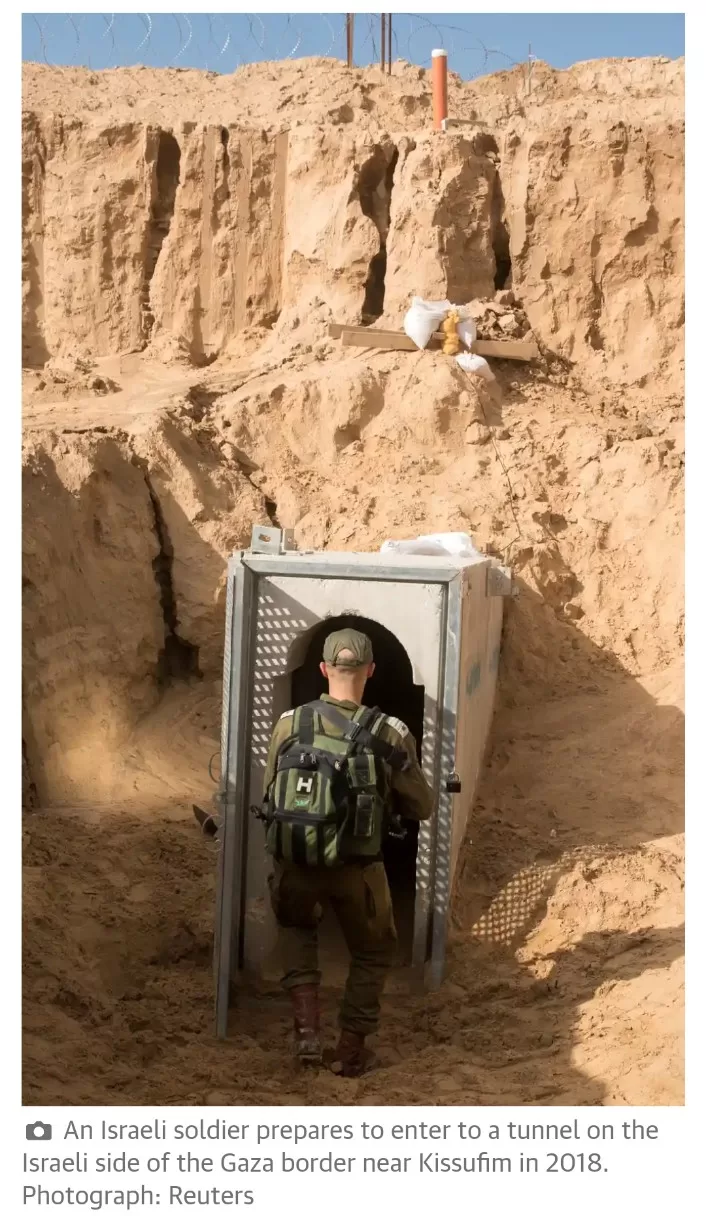In a remarkable display of military might, Israel executed its most extensive aerial bombardment of the Gaza Strip since the onset of the current conflict. The primary focus of this operation was Hamas’s sprawling underground tunnel and bunker network, referred to by Israeli military strategists as the “metro.”
According to an Israel Defense Forces (IDF) spokesperson, approximately 100 aircraft were deployed in this operation, commencing after nightfall, and striking no less than 150 subterranean targets associated with Hamas’s tunnel system. This intricate network has been in development for years and poses a formidable challenge to Israeli forces operating in the region.
Hamas’s tunnel network has been a persistent security concern, having been previously used for smuggling and launching attacks into Israeli territory. It has also posed a significant obstacle for Israeli military incursions into Gaza.
An enlightening glimpse into the scale of this labyrinthine system came from Yocheved Lifshitz, an 85-year-old woman who was held hostage by Hamas during their raid into Israel on October 7. After her release, Lifshitz described a harrowing journey through the tunnels, likening them to a spider’s web.
“We went through the tunnels until we reached a large hall,” she recounted. “We were 25 people, and they separated us according to which kibbutz we were from.”
The existence of tunnels in Gaza is not a new development; they predate Hamas’s control of the territory in 2007 and have been employed for smuggling and rudimentary military activities, including mining Israeli positions.
These tunnels can be categorized into various types, such as Hamas-controlled smuggling tunnels into Egypt, commercial tunnels operated for revenue by Hamas and other factions, and freelance tunnel operations. Notably, Hamas’s combat tunnels were designed for incursions into Israel, placing explosives under Israeli positions, and even kidnapping Israeli soldiers, as was the case with Gilad Shalit in 2006.
The sophistication of these tunnels has evolved over time. Initially, some tunnels were relatively basic and prone to collapse, while others were more substantial, with concrete reinforcements and even electric lighting. However, as Hamas acquired more advanced weaponry and rocket systems, the threat posed by these tunnels became increasingly urgent for Israel.
By 2008, the tunnels had become a significant part of the security narrative surrounding Gaza. Israel conducted a cross-border raid to destroy a tunnel entrance near the Gaza border, believed to be intended for abducting soldiers.
Referred to by some as the “metro,” the tunnel network’s scale remains uncertain, but Hamas has invested significantly in its development. The IDF suggests that this network could extend over 300 miles (480 kilometers) of tunnels, with some reaching depths of 45 meters (150 feet). The main communication tunnels are even wide enough to accommodate a motorbike.
Efforts to monitor and prevent the diversion of building materials for tunnel construction have faced challenges, with a thriving underground economy emerging for such materials.
In a ground invasion of urban areas, these tunnels would present a formidable challenge to Israeli forces. The deep, well-fortified communication tunnels provide Hamas’s leadership with shelter and secure communication networks. The combat tunnels have been strategically designed for fighters to emerge from hidden entrances, complicating any attempts to neutralize them.
John Spencer, chair of urban warfare studies at the Modern War Institute at West Point, underscores the unique tactical challenges that tunnels present, emphasizing the need for specialized equipment and highlighting the potential difficulties of navigation and communication underground.
In conclusion, the ongoing conflict between Israel and Hamas underscores the central role that these tunnels play in the region’s security dynamics, presenting complex challenges for both military strategists and combatants on the ground.






